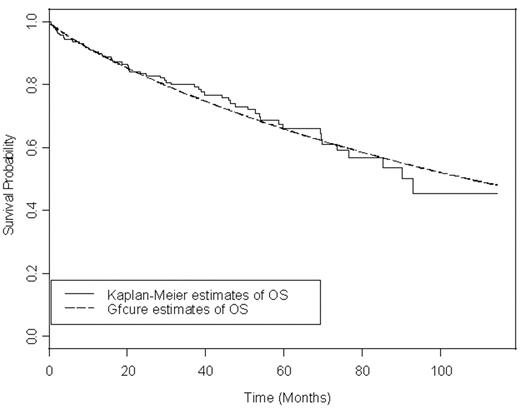Abstract
This retrospective study concerned 471 B-CLL patients registered in the SFGM-TC registry from Apr 1,984 to Feb 2,005, who underwent either autologous transplantation (n=313, 138 F and 175 M, median age = 54, 236 PBSC and 77 BM) or allogeneic transplantation (n=158, 78 F and 80 M, median age = 49, 76 PBSC, 81 BM and 1 cord blood cell transplant from 17 related and 141 unrelated donors). Among alloT patients, 50 were ABO incompatible and 70 sex-mismatched. The median interval diagnosis-transplantation was 32 months for autoT and 51 months for alloT. Just before conditioning 302 autoT and 143 alloT were evaluated for the disease status: 100 and 26 patients were in CR, 170 and 55 were in PR, 4 and 13 in stable disease (SD), 28 and 49 in progressive disease (PD) for autoT and alloT respectively. Among alloT patients, 73 received reduced intensity conditioning (RIC) and 85 standard conditioning (72 Cyt+TBI, 33 Fluda+TBI, 23 Fluda+Bu+ATG, 8 Cyt+Bu and 21 other). Before autoT the conditioning consisted of 224 Cyt+TBI, 45 BEAM and 44 other. After alloT, 71 patients developed an aGVHD ≥ grade II and 60 developed a cGVHD (25 limited and 35 extensive). The non-relapse mortality at 1 year was 29%. With a mean follow-up of 28 months for autoT and 40 months for alloT, the probabilities of 3-year, 5-year and 8-year overall survival were 80%, 66%, 45.5% after autoT and 52%, 48% and 35% after alloT respectively. An analysis aimed to determine the percentage of long-term survivors, or patients censored on the final plateau of survival curves was performed on alloT and autoT groups. A mixture model, gfcure with Splus statistical package determined the percentages of long-term survivors and its adequacy was verified graphically. The percentage of long-term survivors for the autoT group was 1.2%, with a mean survival length for uncured population of 160 months. Fig A shows that both curves were close and consequently shows good adequacy and the absence of a final plateau. The percentage of long-term survivors for alloT was 34.03% (figure1). Fig B shows rather good adequacy. The study of the impact of usual prognosis factors (age, time diagnosis-transplant, sex match, HLA match, CMV status, type of conditioning, BM or PBSC, ABO compatibility and disease status before transplantation) on the percentage of long-term survivors showed that only the status of disease at transplant had a significant impact: (CR vs SD or PD, HR: 0.11 [0.02–0.5] p=0.01 and PR vs SD or PD, HR: 0.30 [0.09–0.96] p=0.04). This study pointed out the possibility of curing B-CLL patients who responded to conventional chemotherapy with allogeneic transplantation rather than with autologous transplantation.
Disclosure: No relevant conflicts of interest to declare.
Author notes
Corresponding author



